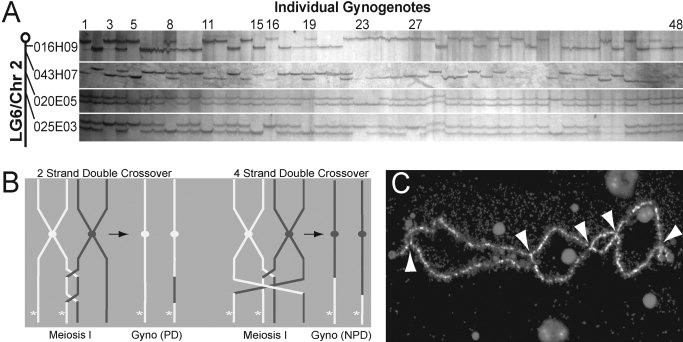
Figure 4. Interference in X. tropicalis. A: Individual gynogenotes (48 lanes total) scored with four markers from the q arm of Chr2/LG6 with centromere-proximal marker (top) to distal (bottom) (016H09, LG6 map position 0.00 cM, 043H07/2.72 cM, 020E05/27.46 cM, and 025E03/44.7cM). Crossovers can be detected by changes between homo- and heterozygosity within a lane; embryos 3, 8, 11, 15, 16, 19, and 27 show more than one crossover between the centromere and the most distal marker. Heterozygosity in the most proximal marker in lanes 8 and 19 reflects a crossover between the centromere and that marker. Lanes 5 and 23 do not display crossovers. B: Some species of double crossover uncouple linkage of distal loci to centromere markers. In the âtwo-strand double crossoverâ (left), a distal recessive mutant locus (asterisks) remains linked to the white parental centromere allele after two intervening crossovers (parental ditype, PD). In the âfour-strand double crossoverâ (right), mutant gynogenote shows dark nonparental ditype (NPD) centromeric alleles. C: Multiple chiasmata (white arrowheads) in a 4â²,6-diamidine-2-phenylidole-dihydrochloride (DAPI) -stained lampbrush preparation of Chromosome 1.Download figure to PowerPoint
Image published in: Khokha MK et al. (2009)
Copyright © 2009. Image reproduced with permission of the Publisher, John Wiley & Sons.
Permanent Image Page
Printer Friendly View
XB-IMG-83619